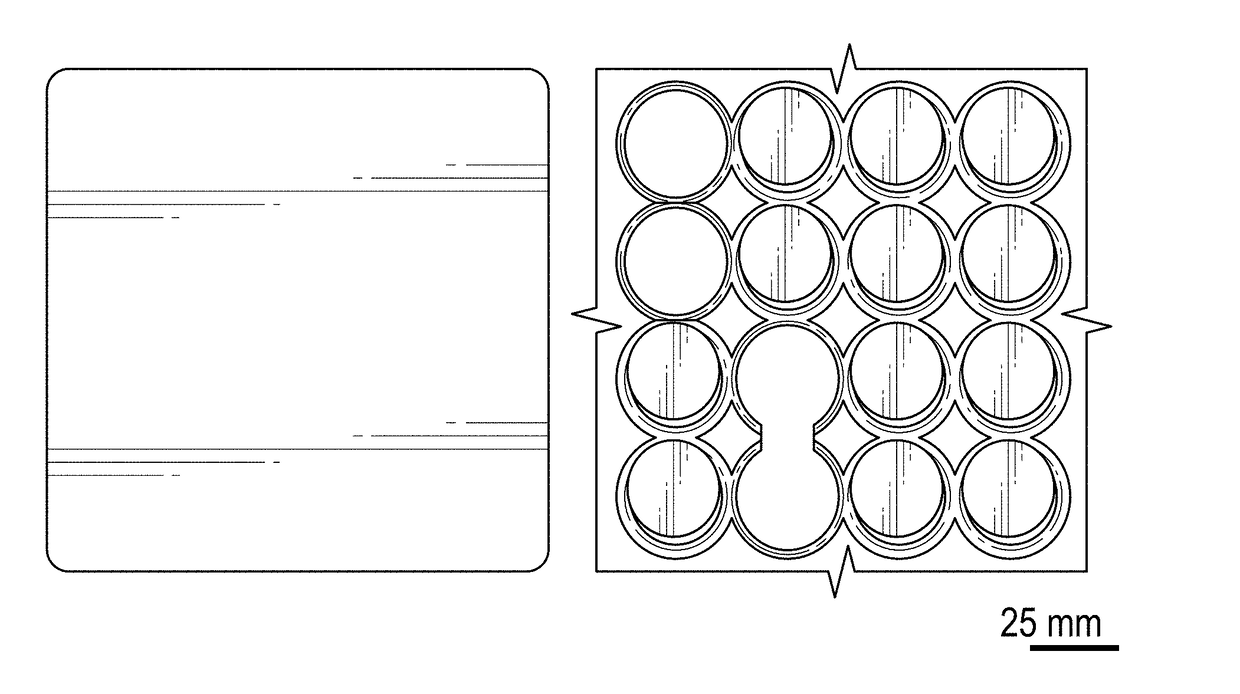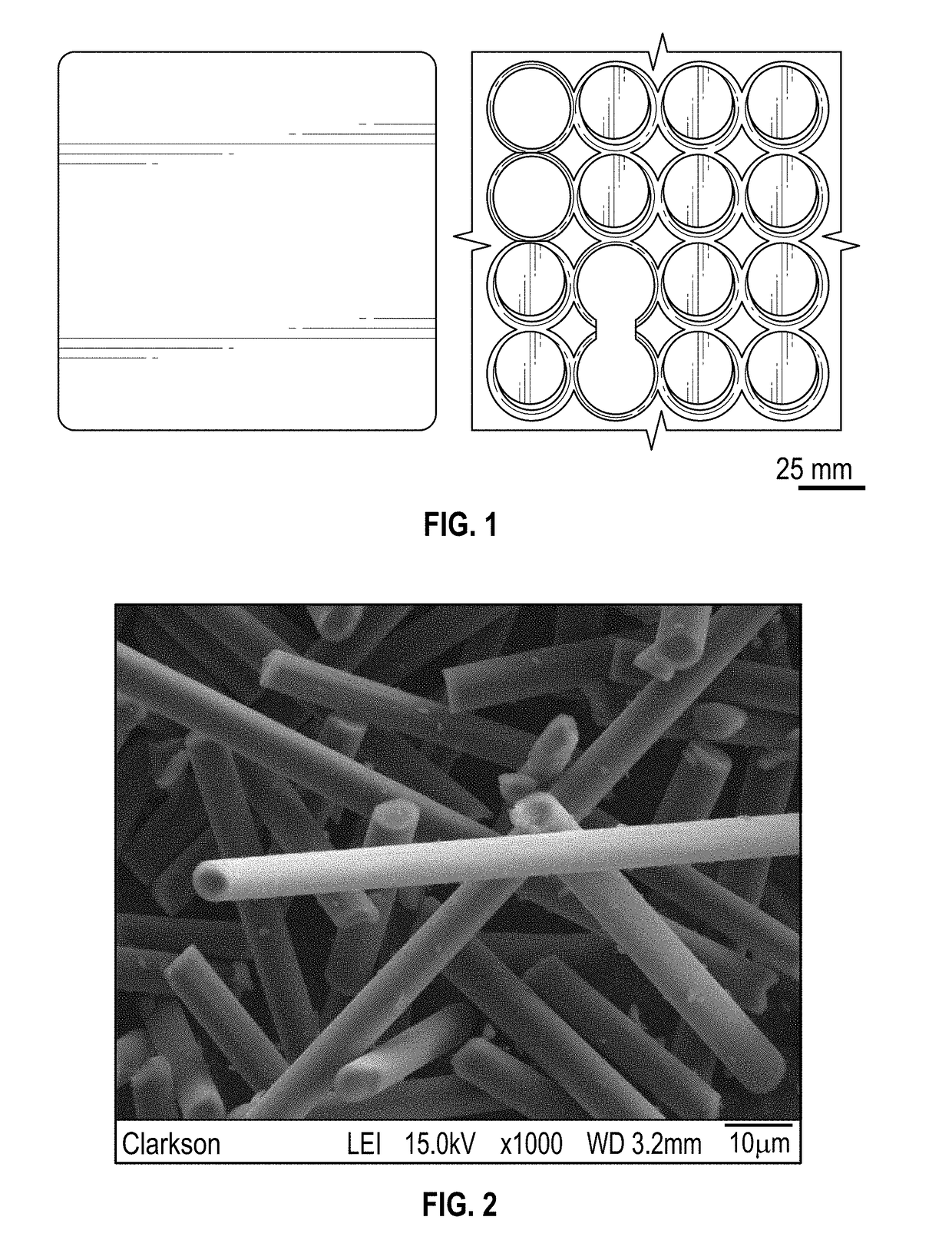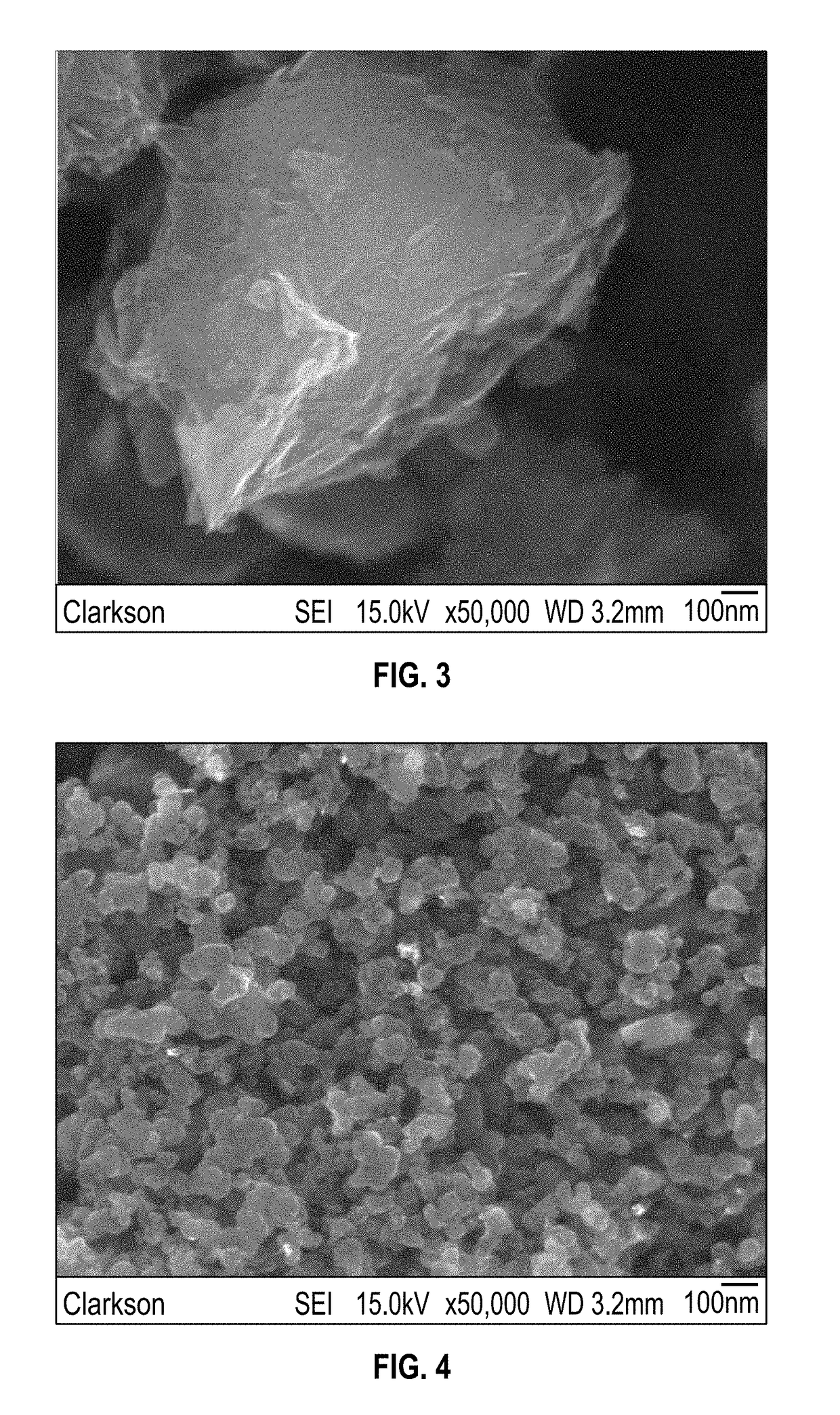Filled elastomers with improved thermal and mechanical properties
- Summary
- Abstract
- Description
- Claims
- Application Information
AI Technical Summary
Benefits of technology
Problems solved by technology
Method used
Image
Examples
example 1
Preparation of Samples
[0056]HNBR composites comprising different fillers were compounded using a Banbury mixer and a two roll mill. Here, the two-dimensional fillers that were used were nanographite and montmorillonite nanoclay (NANOMER® I.31PS nanoclay from Nanocor, Ltd.) which is surface-functionalized with octadecylamine and aminopropyltriethoxysilane. The surface-functionalized nanoclay particles had initial particle dimensions in the range of 14-18 microns. In general, however, size reduction may occur during compounding with elastomer. For purposes of comparison, an unfilled HNBR sample was prepared and HNBR composites using halloysite clay and bentonite clay (each without surface modification) were also prepared. Halloysite clay (one-dimensional, 1D, CAS no. 1332-58-7) has a tube like morphology, rendering it effectively one-dimensional (like carbon fibers), with an outer diameter of 50-60 nm and an inner diameter of 12-15 nm. Each tube is constructed of layers of aluminosili...
example 2
Scanning Electron Microscopy Images of Carbon-Based Fillers
[0058]FIGS. 2-4 show scanning electron microscopy (SEM) images of carbon fibers (FIG. 2), graphite (FIG. 3), and carbon black (FIG. 4) fillers used in Example 1. Carbon fiber (AGM 94, CAS no. 7440-44-0), with a fiber length of approximately 150 μm and a fiber diameter of 7-9 μm was used as a representative one-dimensional filler. Nanographite (Nano 24, CAS no. 7782-42-5) with a Brunauer-Emmett-Teller (BET) surface area of 350 m2 g−1 and 99% carbon content was used as representative two-dimensional filler, having an average number of graphene layers per particle of about 7.5, estimated by dividing the theoretical surface area of graphene (2630 m2 g−1) by the BET surface area. Carbon black (N550, CAS no. 1333-86-4), with oil absorption number of 92-cc mg−1 and iodine number of 121 mg g−1 was used as representative three-dimensional filler.
example 3
Tensile and Compression Testing of Elastomers
[0059]A Universal Testing Machine (Instron 5900R, Instron, Norwood, Mass.) equipped with a 30 kN load cell and a pair of tension grips (or compression platens) was used for tensile and compression testing of the elastomers. A high-temperature furnace was installed on the load frame to conduct the tests at different temperatures and gas environments (air, nitrogen, or argon). The 30 kN load cell was used to measure loads, and the crosshead movement was used for measuring the displacement. FIG. 5 shows diagrams of the test specimens used. In the case of carbon fibers, samples punched out in directions parallel to and perpendicular to the machining direction (corresponding to the direction in which the elastomer was fed into the two roll mill), were used. See FIG. 6, where the direction of the grain (i.e., the direction of alignment of the filler particles, for example, carbon fibers) is marked.
PUM
| Property | Measurement | Unit |
|---|---|---|
| Thickness | aaaaa | aaaaa |
| Fraction | aaaaa | aaaaa |
| Fraction | aaaaa | aaaaa |
Abstract
Description
Claims
Application Information
 Login to View More
Login to View More - R&D
- Intellectual Property
- Life Sciences
- Materials
- Tech Scout
- Unparalleled Data Quality
- Higher Quality Content
- 60% Fewer Hallucinations
Browse by: Latest US Patents, China's latest patents, Technical Efficacy Thesaurus, Application Domain, Technology Topic, Popular Technical Reports.
© 2025 PatSnap. All rights reserved.Legal|Privacy policy|Modern Slavery Act Transparency Statement|Sitemap|About US| Contact US: help@patsnap.com



